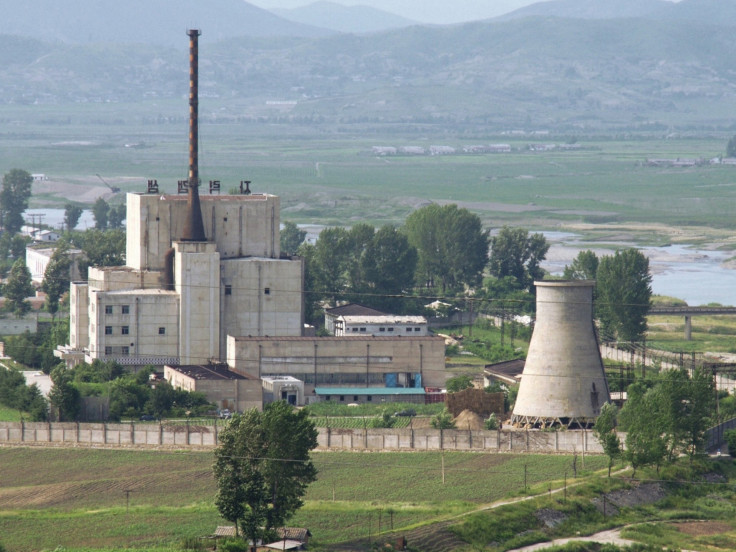North Korea May Be Trying To Restart Its Yongbyon Nuclear Reactor: US Think Tank

North Korea may be trying to restart a nuclear reactor that can produce plutonium for atomic bombs after a five-month shutdown, reports said, citing a U.S. research institute. If the think tank's findings turn out to be true, it will be a cause of concern for the U.S. amid the North's repeated threats of nuclear attacks.
According to an analysis issued by 38 North, a North Korea monitoring project by the Johns Hopkins University in Washington, there were initial signs of the 5-megawatt Yongbyon reactor being restarted. However, it said it was too early to reach a "definitive conclusion." The possible signs included hot water drainage from a pipe at a turbine building, suggesting steam from the reactor. Snow had also started melting on the roof of the reactor and turbine buildings, The Associated Press reported.
The institute said that the findings are based on satellite images from Dec. 24 to Jan. 11.
"One possibility is that the North Koreans are in the early stages of an effort to restart the reactor after an almost five-month hiatus in operations," Reuters said, quoting the analysis, adding: "However, since the facility has been recently observed over a period of only a few weeks, it remains too soon to reach a definitive conclusion on this and also on whether that effort is moving forward or encountering problems."
Images taken during December 2013 had reportedly indicated foam at the end of turbine building’s steam and wastewater drainpipe. However, recent images showed an absence of the foam, which could suggest that new piping has been installed, Reuters reported. Images from last August and late September also suggested that the reactor may have been partially or completely shut, but it is suspected that it was closed to partially refuel the reactor’s core, or for maintenance work.
The findings come at a time when relations between the U.S. and North Korea have soured amid international sanctions against the latter and an ongoing stand-off over a cybersecurity hack at Sony Pictures Entertainment.
The activity at the Yongbyon reactor, which has produced plutonium in the past for test nuclear explosions, is being reportedly closely watched. The reactor was restarted in 2013 after being closed under a 2007 disarmament agreement and has been offline since August.
In April 2013, the country had announced that it would revive the research reactor, claiming it was seeking deterrent capacity, Reuters reported. But the move was highly criticized by the International Atomic Energy Agency, the U.N. nuclear watchdog.
Last November, reports also suggested that North Korea started operating a new nuclear facility within the Yongbyon nuclear power plant in order to boost its production of uranium-enriched fuel for nuclear weapons. Earlier this month, the South Korean defense ministry claimed that North Korea had achieved a “significant” level of technology to build mini nuclear devices that could be fitted on tip of a missile.
© Copyright IBTimes 2025. All rights reserved.






















